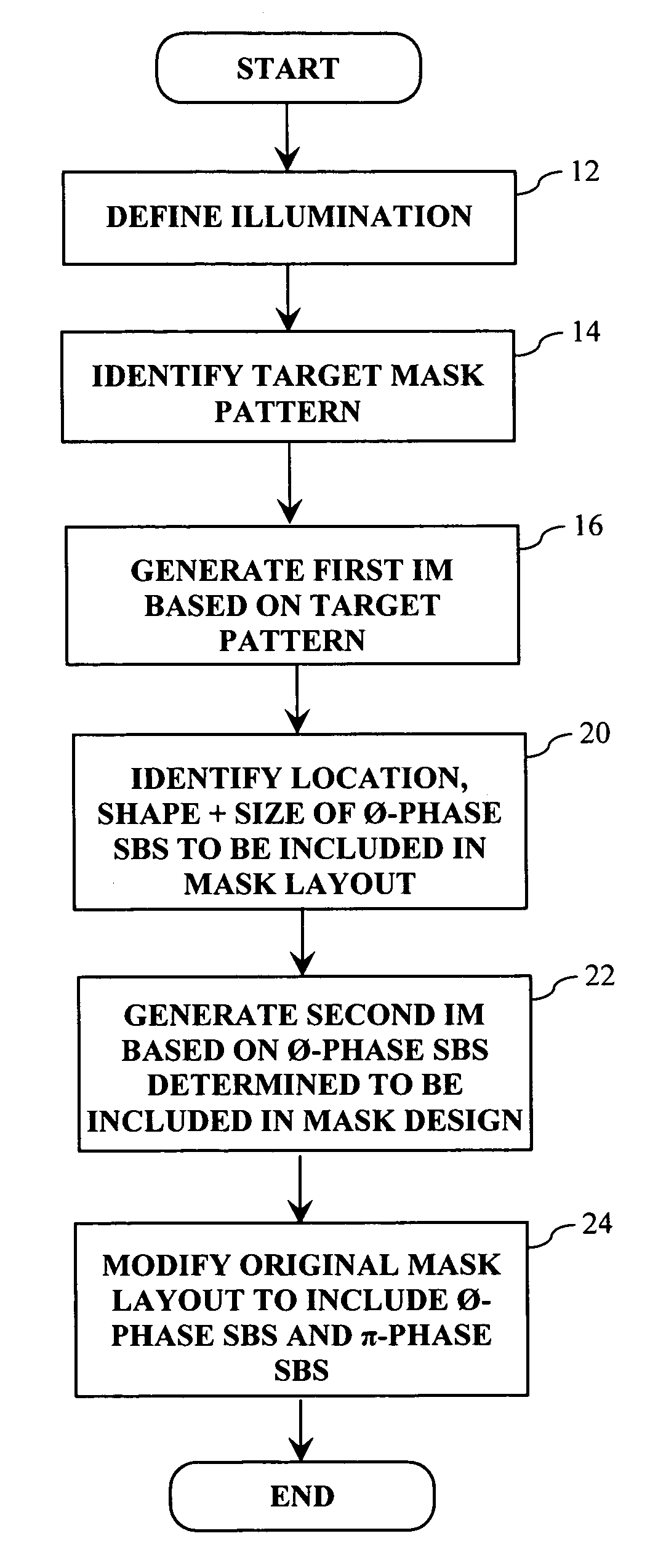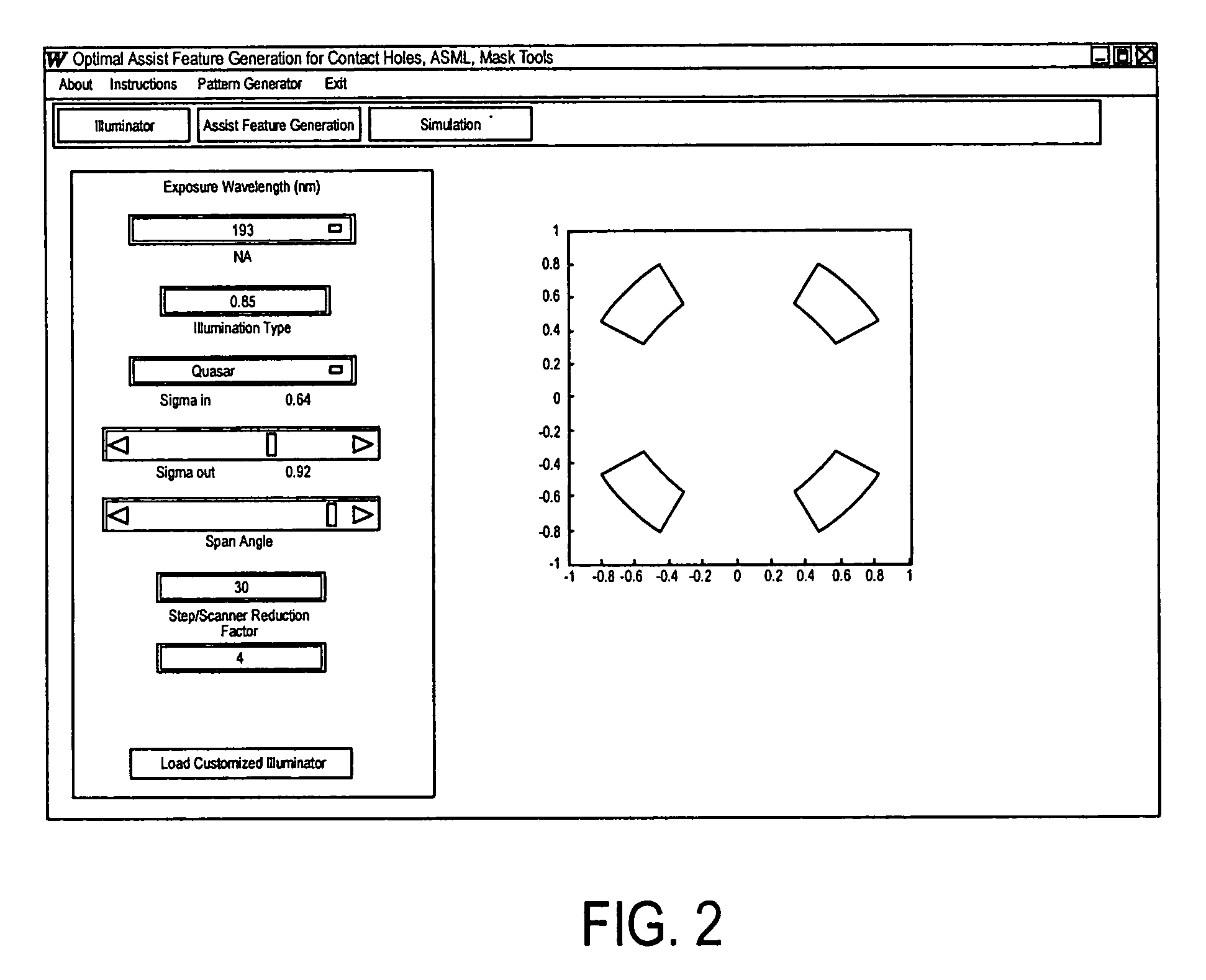Method and apparatus for performing model based placement of phase-balanced scattering bars for sub-wavelength optical lithography
a technology of phase-balanced scattering and sub-wavelength optical lithography, applied in the field of photolithography, can solve the problems of reducing the size of an integrated circuit, the critical dimension of its corresponding mask pattern approaching the resolution limit of the optical exposure tool, and the process becomes more difficult, so as to prevent the reduction of the latitude of the printing process for the main design features
- Summary
- Abstract
- Description
- Claims
- Application Information
AI Technical Summary
Benefits of technology
Problems solved by technology
Method used
Image
Examples
Embodiment Construction
[0038]As explained in more detail below, the OPC technique of the present invention allows for a full-pitch range of deep sub-wavelength mask patterns to be imaged utilizing substantially any illumination condition. In general, the OPC technique entails generating an interference map (IM) based on the mask design (i.e., target pattern), which indicates how each point in the field surrounding the desired target pattern interacts with the target pattern. The possibilities are that a given point either constructively interferes, destructively interferes or is neutral (i.e., neither constructive or destructive interference) with respect to the target pattern. Once the IM is generated, it is utilized to determine where 0-phase assist features (i.e., SBs) are positioned in the mask design so as to enhance the imaging of the target features. Next, a second IM is generated based on the placement of the 0-phase assist features, which indicates how each point in the field surrounding the 0-ph...
PUM
| Property | Measurement | Unit |
|---|---|---|
| wavelength | aaaaa | aaaaa |
| wavelength | aaaaa | aaaaa |
| wavelength | aaaaa | aaaaa |
Abstract
Description
Claims
Application Information
 Login to View More
Login to View More - R&D
- Intellectual Property
- Life Sciences
- Materials
- Tech Scout
- Unparalleled Data Quality
- Higher Quality Content
- 60% Fewer Hallucinations
Browse by: Latest US Patents, China's latest patents, Technical Efficacy Thesaurus, Application Domain, Technology Topic, Popular Technical Reports.
© 2025 PatSnap. All rights reserved.Legal|Privacy policy|Modern Slavery Act Transparency Statement|Sitemap|About US| Contact US: help@patsnap.com



